A bell cast by Robert Norton of Exeter
Back to Time Period
In the late middle ages the casting of bells was a complicated and sometimes dangerous craft skill. In each casting large quantities of molten bell metal were poured into an underground casting pit where a cavity corresponding to the final shape of the bell had been prepared between clay moulds. The tone of the bell depended on the precise thickness of its various parts; in a successful casting its different notes are in harmony. The particular interest of the bell lies in the founder's mark in the inscription band, which incorporates the initials R and N, flanking a bell and enclosed within a cabled circle. These allow the maker to be identified as Robert Norton of Exeter, who became a freeman of the city in 1423 and was still working in the 1440s. Norton was a prolific founder: more than twenty of his bells are known in Devon, with a scatter of others in the adjacent counties of Cornwall, Somerset and Dorset. This example came from Halse, near Taunton in Somerset. The bell which hangs above St Pancras church in the Guildhall Shopping Centre is another example of his work.
These have long been admired, both for their beauty of tone and for their clean and precise workmanship. Norton was a progressive figure in English foundry practice, adopting at an early date or even introducing the use of stock legends in which each word of the inscription was impressed from a single stamp, superseding the earlier and more laborious practice of impressing each letter of the inscription individually into the mould. The inscription (which is in Latin) reads: : + Est michi collatum ihc istud nomen amatum [To me is given Jesus that beloved name]. Archaeological excavations at Mermaid Yard, Exeter, in 1977-8 recovered evidence of the city's late medieval foundry, including fragmentary clay-loam moulds in which bells and domestic metalwork such as cauldrons and skillets were cast.
Acknowledgments: RAM Museum Rev. John Scott



















